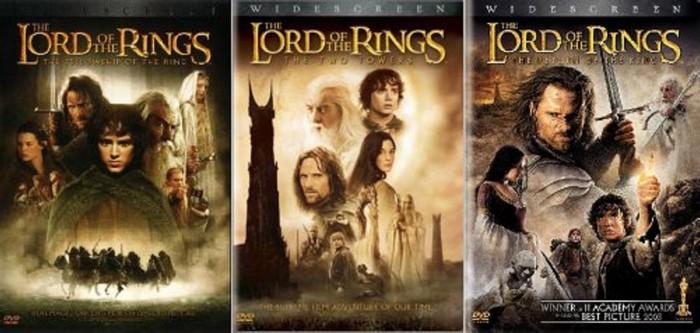In the vast and enchanting world of J.R.R. Tolkien’s Middle-earth, the question of where to begin the epic journey is a pivotal one for readers and enthusiasts alike. The “Lord of the Rings” trilogy, comprising “The Fellowship of the Ring,” “The Two Towers,” and “The Return of the King,” stands as a cornerstone of fantasy literature. As readers embark on this literary adventure, the query arises: Which “Lord of the Rings” book comes first? In this comprehensive exploration, we navigate the chronological tapestry of Tolkien’s masterpiece, consider the narrative structure, and offer insights to guide both newcomers and seasoned fans through the wondrous realms of Middle-earth.
The Trilogy’s Structure: A Narrative Symphony in Three Movements
Before delving into the order of the books, it’s crucial to understand the overarching structure of the “Lord of the Rings” trilogy. Tolkien conceived the work not as three separate novels but as a unified and continuous narrative, divided into three volumes for practical publishing reasons. The trilogy unfolds seamlessly, with each book serving as a distinct movement in a grand symphony of storytelling.
“The Fellowship of the Ring”: The opening act introduces readers to the Shire, Frodo Baggins, and the fateful quest to destroy the One Ring. The formation of the Fellowship and their perilous journey sets the stage for the unfolding drama.
“The Two Towers”: The narrative expands to follow multiple storylines. Frodo and Sam continue their journey to Mordor, while Aragorn, Legolas, and Gimli embark on their quest. The intricacies of the plot deepen, introducing new characters and challenges.
“The Return of the King”: The final volume brings the narrative threads together for the epic conclusion. The fate of Middle-earth hangs in the balance as the characters face their ultimate trials and the destiny of the One Ring is decided.
The Chronological Sequence: The Road to Mordor Unveiled
In terms of chronological sequence within the story, the order of the books aligns with the geographical progression of the characters as they undertake their quest:
“The Fellowship of the Ring”: The journey begins in the Shire, progresses through Rivendell, and sets the Fellowship on the path toward Mordor.
“The Two Towers”: The narrative unfolds with events in parallel. While Frodo and Sam continue their journey southeast toward Mordor, the other members of the Fellowship navigate challenges in different regions, including Rohan and Isengard.
“The Return of the King”: The final volume encompasses the concluding chapters of the quest. The characters converge on Mordor, and the fate of the Ring is decided in the heart of Mount Doom.
The chronological sequence aligns with the geographic progression of the characters, providing a natural flow to the unfolding events of the quest.
Cinematic Adaptation Influence: From Page to Screen
The immense success of Peter Jackson’s film adaptations of “The Lord of the Rings” has introduced a generation of viewers to Tolkien’s work. While the films closely adhere to the narrative structure of the books, the visual medium introduces some variations for cinematic impact.
For those introduced to Middle-earth through the films, the narrative sequence closely mirrors the books, reinforcing the cohesion of Tolkien’s storytelling across different mediums.
Reader’s Dilemma: To Begin with “The Hobbit” or “The Fellowship”?
A common dilemma for readers approaching Tolkien’s works is whether to begin with “The Hobbit” or to dive directly into “The Fellowship of the Ring.” “The Hobbit” serves as a precursor to the events of “The Lord of the Rings,” introducing readers to the character of Bilbo Baggins and the discovery of the One Ring. However, it is not a mandatory starting point for the trilogy.
For those seeking a chronological introduction to Middle-earth, starting with “The Hobbit” provides a delightful and accessible entry point. However, beginning directly with “The Fellowship of the Ring” offers a more immersive introduction to the epic narrative that defines “The Lord of the Rings.”
Conclusion: A Timeless Odyssey through Middle-earth
In conclusion, the question of which “Lord of the Rings” book comes first unveils a nuanced approach to Tolkien’s masterpiece. Whether readers begin with “The Hobbit” or dive straight into “The Fellowship of the Ring,” the journey through Middle-earth is a timeless odyssey that transcends chronological considerations.
The narrative cohesion of the trilogy, the geographic progression of the characters, and the influence of cinematic adaptations contribute to the enduring allure of “The Lord of the Rings.” Tolkien’s legacy continues to captivate readers, inviting them to embark on a literary adventure that spans continents, cultures, and the very essence of heroism and friendship.
As readers traverse the pages of Middle-earth, they become part of a fellowship that extends across generations, forging a connection with characters and themes that resonate with the enduring spirit of Tolkien’s creation. Whether it’s the first or fiftieth journey through the trilogy, the magic of “The Lord of the Rings” lies in its ability to transport readers to a world where the quest for courage, wisdom, and the triumph of good over evil unfolds with timeless resonance.

